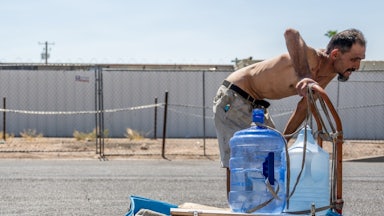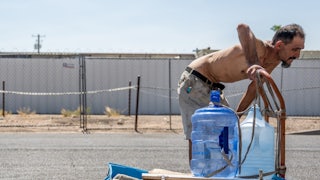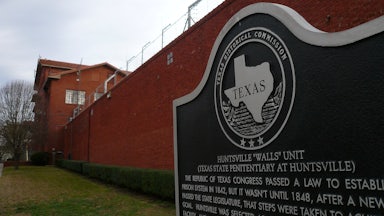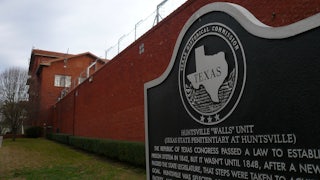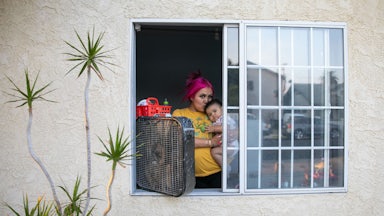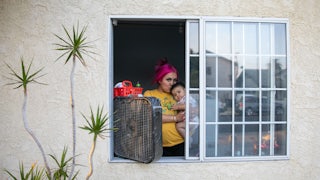July 30, 2001, was the first day of the Minnesota Vikings’ training camp. In a trailer not far from the football field, offensive tackle Korey Stringer sat on an examination table, bobbing his head as if to music, observers later said. Stringer was coming off a bumper season, having taken honors in the National Football League’s 2000 Pro Bowl.
As described later in court documents, then–head coach Mike Tice remembered Stringer being in the best shape of his life—but the nearly 340-pound lineman was struggling under record-breaking heat and humidity. The National Weather Service had forecast a heat index of 105–110 degrees that day and issued several heat advisories.
When we get hot, our body works to cool itself. Our blood vessels widen, preparing for a deluge as our heart—now working harder—pumps blood toward our skin, which is about four degrees cooler than our body’s core temperature. We begin to sweat, which—when it evaporates—accounts for 80 percent of how we let off heat while exercising.
When these biological safety systems fail, and the body’s temperature rises faster than it can cool itself, that’s when heat-related illnesses like heat exhaustion or heatstroke happen. Our cells and organs begin to overheat.
On July 31, the second day of camp, Stringer repeatedly vomited during morning practice before collapsing. Almost half an hour later and in the air-conditioned trailer, Stringer began acting oddly, moving his massive arms in time with melodies only he could hear. Stringer was eventually taken to the hospital, nearly an hour after he had collapsed on the field, according to court documents.
Eleven Vikings players, including Stringer, suffered heat-related illness on July 31, 2001. Despite his otherwise outstanding physical fitness, Korey Stringer died on August 1, 2001, from exertional heatstroke complications after falling into a coma.
As climate change combined with El Niño breaks heat record after heat record, our increasingly hot world is also becoming more humid. Despite increasing media attention on heat deaths in the news, most of us don’t know how to conceptualize just how deadly heat combined with humidity can be. But experts caution that we may begin to see many more deaths like Stringer’s soon—and that the public and policymakers need to start paying attention to the specifics of how humans experience hotter and more humid conditions.
Veerabhadran Ramanathan was one of the first climate scientists, in the 1970s, to sound the alarm on how certain pollutants, like chlorofluorocarbons, impact the atmosphere. In 2022, he published a study in the Proceedings of the National Academy of Sciences showing that when humidity was taken into account, increases in temperatures due to climate change since the 1980s were nearly twice as bad or worse than previous models that only measured air surface temperatures, depending on where you lived.
“Normally, we think that hot means dry, and that is true locally in particular regions,” said Ramanathan, an atmospheric and climate sciences professor at University of California San Diego’s Scripps Institute of Oceanography. “But globally, hot is more humid.”
There are two reasons for this increase. First, as the ocean heats up, more of its water evaporates, rising into the atmosphere as humidity. The second reason is a fundamental law of thermodynamics: With each degree the air warms, its ability to hold moisture increases by about 4 percent.
“Globally, the humidity has to go up as the planet heats up,” Ramanathan said.
The air’s ability to hold moisture is also why sweltering, sticky days feel worse than dry heat. Humid air is already carrying a lot of water, which makes it less able to pick up the extra moisture in the form of evaporating sweat—our frontline defense against heat-related illnesses.
Heat has a public relations problem, argues journalist Jeff Goodell in his latest book, The Heat Will Kill You First: Life and Death on a Scorched Planet. Most of us are familiar with the temperature readings we see on the nightly news, usually the temperature of the air around us or the heat index—a gauge of air temperature and humidity. But during the latest U.S. heat wave, some areas reported what’s known as wet bulb temperatures—a measurement of the lowest temperature that the evaporation of water can cool air—of 94 degrees.
This measurement in ambient air temperature may not seem like a big deal to many people. But it’s a dangerous measurement in wet bulb temperatures, Goodell explains in his book. The higher the wet bulb temperature, the less effective evaporation is, and the harder it is for our sweat to cool us down.
“A wet bulb temperature of 95 degrees—which basically means both outdoor air temperature and humidity levels are high—is the upper end of human adaptability to humid heat,” he writes. “Beyond that, our body generates heat faster than it can dissipate it.”
As recently as the 2010s, scientists didn’t think it was likely that climate change would become so severe that places on earth would routinely experience wet bulb temperatures above the limit of human survivability until the middle of the next century. But over the past couple of years, research has shown that some tropical regions have already logged these extreme wet bulb temperatures, while overall humidity has doubled since the early 1980s.
Despite the emergence of this new threat, most of us have never heard of wet bulb temperatures among the bevy of confusing ways we talk about heat. “Heat index, ‘feels like’ temperature, ‘apparent temperature,’ wet bulb temperature, and wet bulb globe temperature.…” Goodell writes. “It’s no surprise that people are confused about when heat crosses the boundary from something that feels good to something that can kill.”
Wet bulb temperatures as a measurement were invented in the early 1900s. By the 1950s, the U.S. military had improved on the concept in response to mounting heat deaths among its ranks: the idea of the wet bulb globe temperatures.
Wet bulb globe temperatures are the only measure of heat that include four components of how we experience it: ambient air temperature, humidity, wind speed, and the strength of the sun’s rays, or radiation.
It’s also become a potent weapon in saving lives. Kelci Stringer, Korey’s widow, filed several wrongful death suits following her husband’s death. In 2010, she helped form the Korey Stringer Institute at the University of Connecticut. The institute is dedicated to preventing exertional heatstroke, the type of heatstroke that Stringer died from and that most often affects athletes, outdoor workers, and soldiers.
“The fact that wet bulb globe temperatures incorporate all of those components is why, in the data, we see it be so much more highly predictive of heat illness in primarily athletes but also soldiers and laborers,” said athletic trainer Rebecca Stearns, the Stringer Institute’s chief operating officer. “That’s why a lot of standards and best practice documents from the medical profession rely on wet bulb globe temperatures.”
Nearly seven out of 10 reported deaths among American football players have taken place in the muggy month of August on the East Coast, according to the institute’s website. More than half of these deaths occurred during morning practices when humidity was high. Stearns said that the data likely underestimate deaths among athletes, particularly at the high school level.
Still, the institute says on its website that these results show a direct correlation between increased temperature and humidity levels and the risk of heatstroke deaths among some of society’s fittest members, like athletes, outdoor workers, and soldiers.
Today, the military, the NFL, a growing number of companies, and high school sports associations use wet bulb globe temperatures to determine when, how, and if soldiers, workers, and athletes can do their jobs safely. Similarly, the Department of Labor’s Occupational Safety and Health Administration has heat safety guidelines for workers based on wet bulb globe temperatures. All safety guidelines based on these temperature readings also factor in what’s normal heat and humidity for a location and personal risk factors, such as fitness level.
But gaps in policy and awareness remain. Texas and California, for instance, account for about one in five high school athletes. High school football players are about four times more likely than any other high school athlete to suffer a heat illness than other student athletes of the same age, Stearns said. Neither state mandates guidelines based on wet bulb globe temperatures to keep kids safe. Texas, which studies show will see temperatures soar in the coming decades, recently passed a law that would reverse city-level mandated water breaks for workers; no wet bulb globe temperature safety standards or guidelines could be found on the state’s Department of Health and Human Services or Workforce Commission websites.
“Ninety-two degrees Fahrenheit is one of the upper thresholds for safe athletic participation, from a wet bulb globe temperature standard,” Stearns said. “But for someone unfamiliar with it, of course, they’re going to think that’s ambient temperature, and we see 92 degrees in ambient air temperature all the time.”
Stearns told me that there’s going to be a learning curve in getting the public to understand what wet bulb globe temperatures are. Still, she said the public has learned other heat-tracking systems before. And because interpreting wet bulb globe temperatures is predicated on local weather patterns, community news stations could one day help communicate wet bulb globe temperatures via color-coded warning levels.
Could safety guidelines based on wet bulb globe temperatures have saved Korey Stringer? Stearns thinks so, alongside speedy access to basic measures like cold-water immersion baths.
“There was a heat advisory for livestock and cattle the day that he died,” she said. “Livestock and cattle were actually required to be brought inside … but they still had football practice.”

